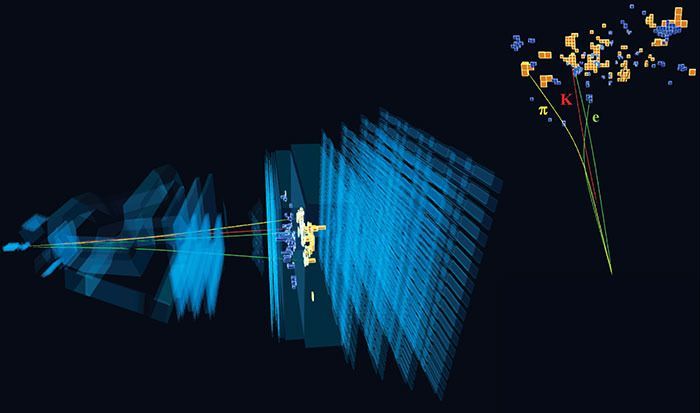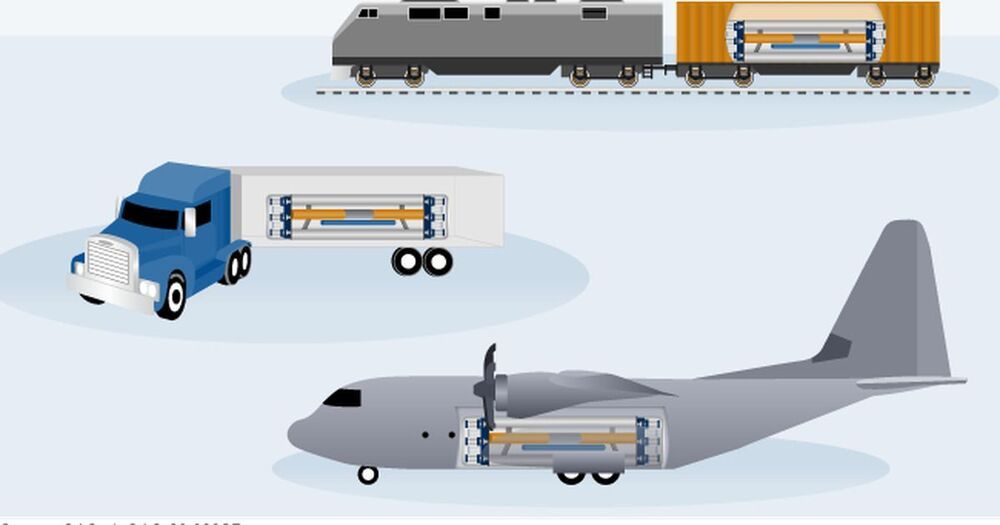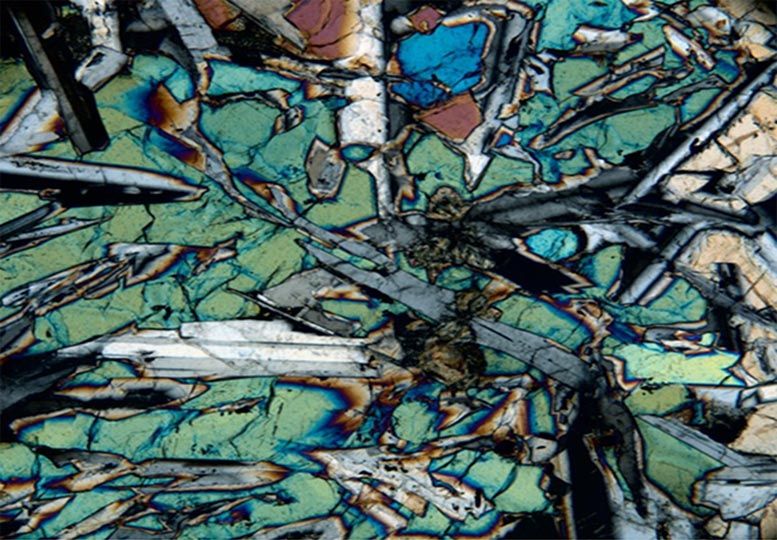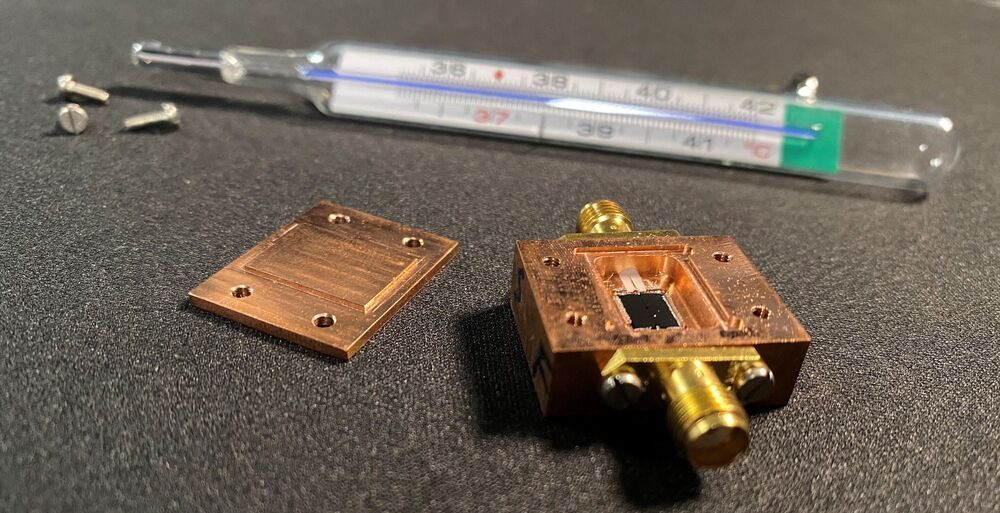New York approves a power cable for Deepwater Wind South Fork; Give Solar works with Habitat for Humanity to provide solar for homeowners.
Fan speeds clock in over 11000 RPM.
Dynatron rolls out the A38, a robust CPU air cooler for AMD Ryzen Threadripper and EPYC processors.
Reading Minds With Ultrasound
Posted in neuroscience
Summary: Focused ultrasound allowed researchers to record and monitor brain activity in a non-invasive way. The technology allowed the researchers to predict movement.
Source: CalTech.
What is happening in your brain as you are scrolling through this page? In other words, which areas of your brain are active, which neurons are talking to which others, and what signals are they sending to your muscles?
A hint of the possible existence of a hypothetical particle called a leptoquark has appeared as an unexpected difference in how beauty quarks decay to create electrons or muons. Measured by physicists working on the LHCb experiment on the Large Hadron Collider (LHC) at CERN, the difference appears to violate the principle of “lepton universality”, which is part of the Standard Model of particle physics. The measurement has been made at a statistical significance of 3.1σ, which is well below the 5σ level that is usually considered a discovery. If the violation is confirmed, it could provide physicists with important clues about physics beyond the Standard Model – such as the existence of leptoquarks.
When high-energy protons are smashed together at the LHC large numbers of exotic particles are created, including some containing the beauty quark. These exotic particles quickly decay, and beauty quarks can follow decay paths that involve the production of either electrons or muons, which are both leptons. According to the Standard Model of particle physics, the interactions involved in producing leptons do not discriminate between lepton type, so the rates at which electrons and muons are created by beauty-quark decays are expected to be the same.
Starting in 2014, physicists working on LHCb noticed hints of the violation of this lepton universality. Now, after analysing collision data collected between 2011 and 2018, the researchers have found that the beauty quark appears to favour the electron decay chain over the muon decay chain.
NASA has announced its newest fleet of far-out exploration ideas, including projects tackling sample return from Saturn’s moon Titan, artificial gravity for astronauts, and collecting vast amounts of planetary data.
The two companies, along with Westinghouse Government Services, were each given preliminary contracts of less than $15 million in March 2020 to begin design work. The final design is due to the Strategic Capabilities Office in 2022, at which point the Defense Department will make a decision on whether to move forward with testing the systems.
“We are thrilled with the progress our industrial partners have made on their designs,” Jeff Waksman, Project Pele’s program manager, said in a statement. “We are confident that by early 2022 we will have two engineering designs matured to a sufficient state that we will be able to determine suitability for possible construction and testing.”
The Pentagon has long eyed nuclear power as a potential way to reduce both its energy cost and its vulnerability in its dependence on local energy grids. According to a news release, the Defense Department uses “approximately 30 Terawatt-hours of electricity per year and more than 10 million gallons of fuel per day.”
A new type of rock created during large and exceptionally hot volcanic eruptions has been discovered beneath the Pacific Ocean.
An international team of researchers including the University of Leeds unearthed the previously unknown form of basalt after drilling through the Pacific ocean floor.
The discovery suggests that ocean floor eruptions sourced in the Earth’s mantle were even hotter and more voluminous than previously thought. Report co-author is Dr Ivan Savov, of Leeds’ Institute of Geophysics and Tectonics, in the university’s School of Earth and Environment.
In celebration of the 40th anniversary of the first Space Shuttle launch, Lego is releasing a new Space Shuttle Discovery set in collaboration with NASA. Discovery was not the first shuttle to take flight — that would be Columbia, which likely stirs up too many sad feelings for a Lego set — but it was the shuttle that launched the Hubble Space Telescope, which is also included in the set.
Available April 1st for $200, the set has 2354 pieces, including three newly designed pieces for the windscreen and payload bay. It also includes 108 drum lacquered silver pieces, the most of any Lego set yet.
Researchers at Chalmers University of Technology, Gothenburg, Sweden, have developed a novel type of thermometer that can simply and quickly measure temperatures during quantum calculations with extremely high accuracy. The breakthrough provides a benchmarking tool for quantum computing of great value—and opens up for experiments in the exciting field of quantum thermodynamics.
Key components in quantum computers are coaxial cables and waveguides—structures that guide waveforms and act as the vital connection between the quantum processor and the classical electronics that control it. Microwave pulses travel along the waveguides to the quantum processor, and are cooled down to extremely low temperatures along the way. The waveguide also attenuates and filters the pulses, enabling the extremely sensitive quantum computer to work with stable quantum states.
In order to maximize control over this mechanism, the researchers need to be sure that these waveguides are not carrying noise due to thermal motion of electrons on top of the pulses that they send. In other words, they have to measure the temperature of the electromagnetic fields at the cold end of the microwave waveguides, the point where the controlling pulses are delivered to the computer’s qubits. Working at the lowest possible temperature minimizes the risk of introducing errors in the qubits.
# **MARS: A GATEWAY TO THE SOLAR SYSTEM**
Today’s highlight: **Bruce MacKenzie**, founder of the Mars Foundation.
Bruce gave us a detailed view of what will be the economical and industrial development in the solar system, in a broad and strategical concept: Mars, a gateway to the Solar System. How will a future trade and export take place on Mars, to facilitate the civilization expansion into the Solar System. Lot of works will focus on Phobos and Deimos, the Mars’s moons. A space elevator between Mars and Phobos will be key. Thousands of independent space settlements will allow to study and understand how ecosystems work, how water, food, wastes cycles can be better combined and integrated, and such a knowledge will have a fallout back on Earth too. Several favorable conditions suggest to start with Mars, to open the solar system to humanity and life: water, carbon, nutrients, raw materials. Trading among different space settlements is key. Mars infrastructures will include: greenhouses, manufacturing, materials processing, residential areas, ice road, desert trek, farm communities, truck stops, polymer production, fuel production. Key productions to start: polymers and fiber glass. Cargo transportation from Mars surface to the moons and orbital facilities with e.g. space elevators, magnetic guns, regolith rockets. Mars can produce finished goods, food, and bulk materials (gas, ice, liquids, fuel, fertilizers), delivered to Mars orbit, and then to other destinations. Floating towns in Venus atmosphere is another possible location for settlers communities. For a period of time, Mars will be the “bread-basket” of the Solar System.
Here’s the whole **Webinar on Mars, the Asteroid Belt and Beyond**: https://www.youtube.com/watch?v=S57G71SURYc.
Also see the other speeches of the Webinar, that will be proposed in the newsletters to come.









